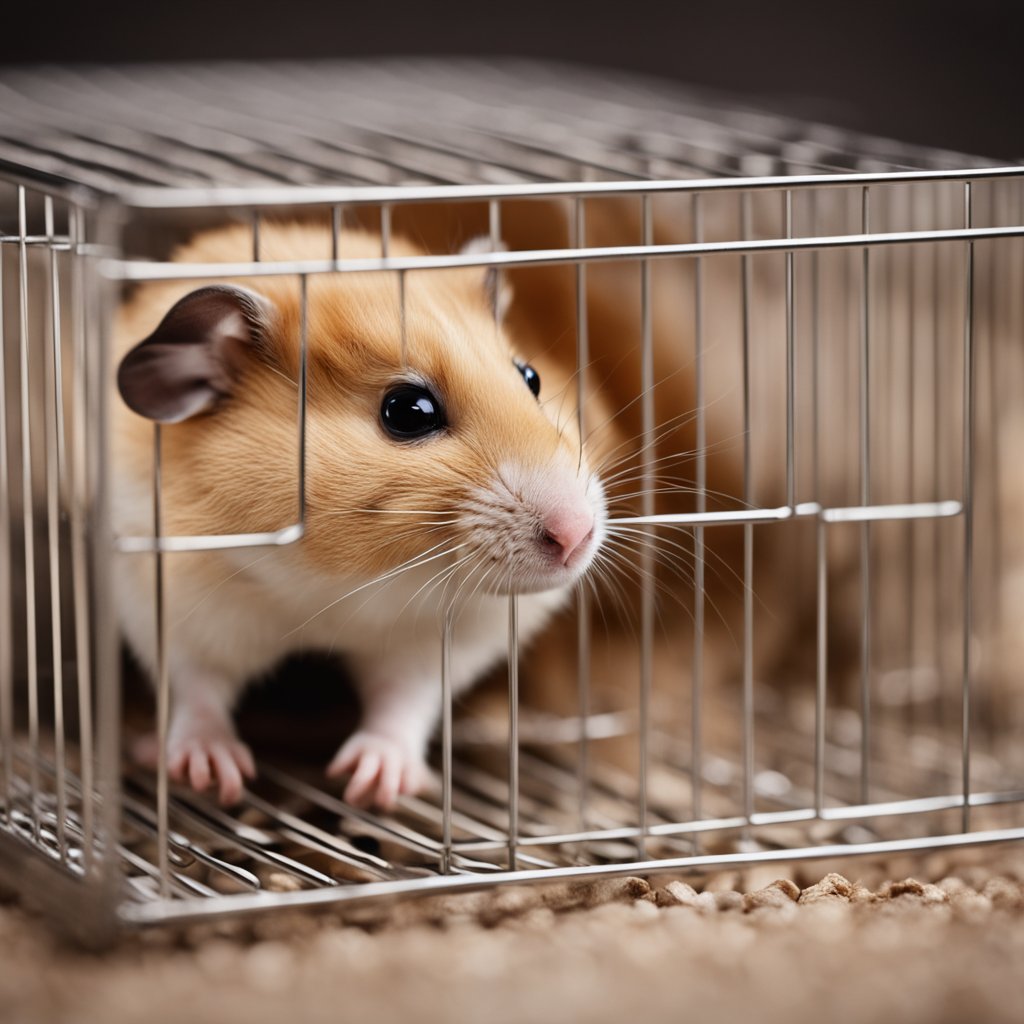What to Do When Your Hamster Dies: Practical Tips and Advice
Losing a pet is never easy, and the death of a hamster can be especially difficult. These small creatures may have short lifespans, but they can quickly become beloved members of the family. If you’re dealing with the loss of a hamster, it’s important to know what to do next.
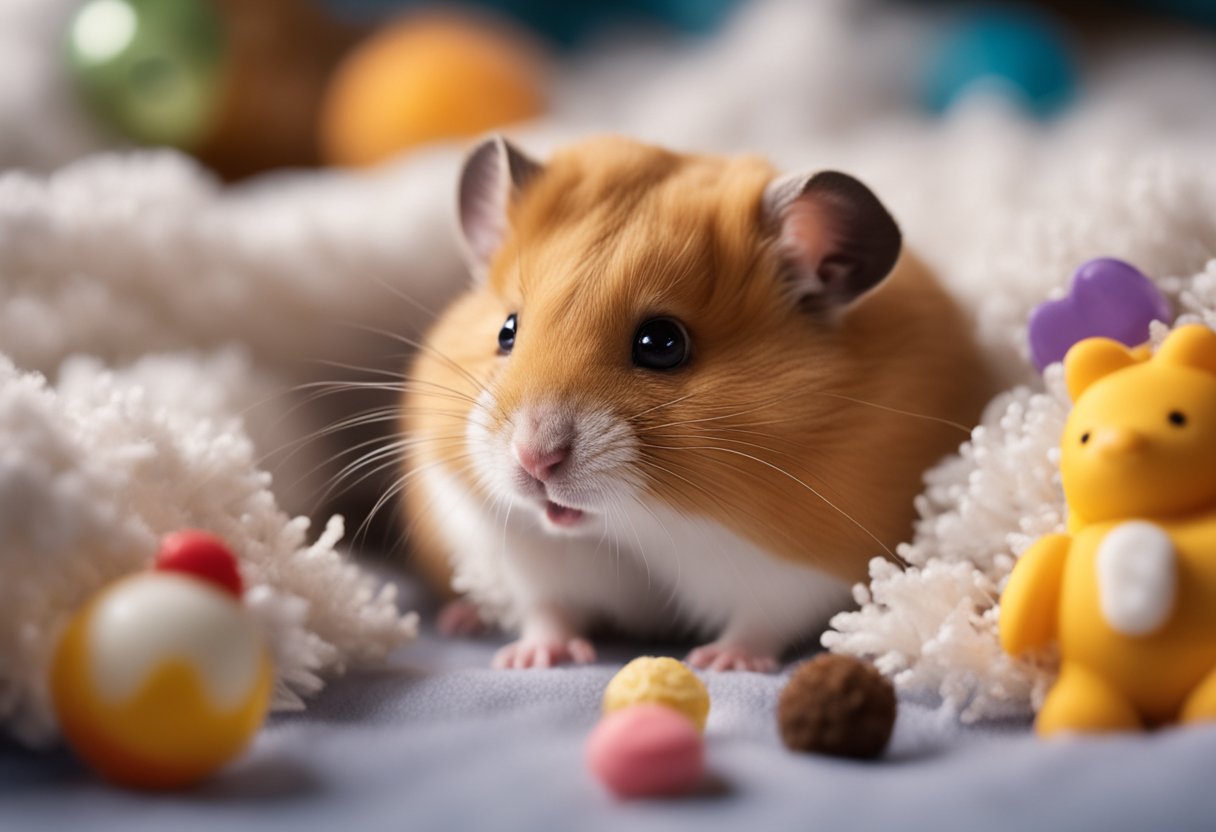
Immediate Steps After Your Hamster’s Death The first thing to do when your hamster dies is to confirm that it has passed away. Look for signs of breathing, such as chest and body movements, or place a small mirror or piece of glass near its nose to see if any condensation forms, indicating breath. You can also gently touch the hamster’s whiskers or ears to see if they respond to the stimulus. If there are no signs of life, then your hamster has passed away.
Long-Term Considerations Once you have confirmed that your hamster has died, you will need to decide what to do with its body. There are a few options available, including burial, cremation, or composting. If you choose to bury your hamster, be sure to do so in a location that is legal and safe. If you opt for cremation, there are pet cremation services available that can handle the process for you. Composting is another option, but it may not be legal in all areas.
Key Takeaways
- Confirm that your hamster has passed away before deciding what to do with its body.
- Consider your options for burial, cremation, or composting.
- Take time to grieve and remember your beloved pet.
Immediate Steps After Your Hamster’s Death
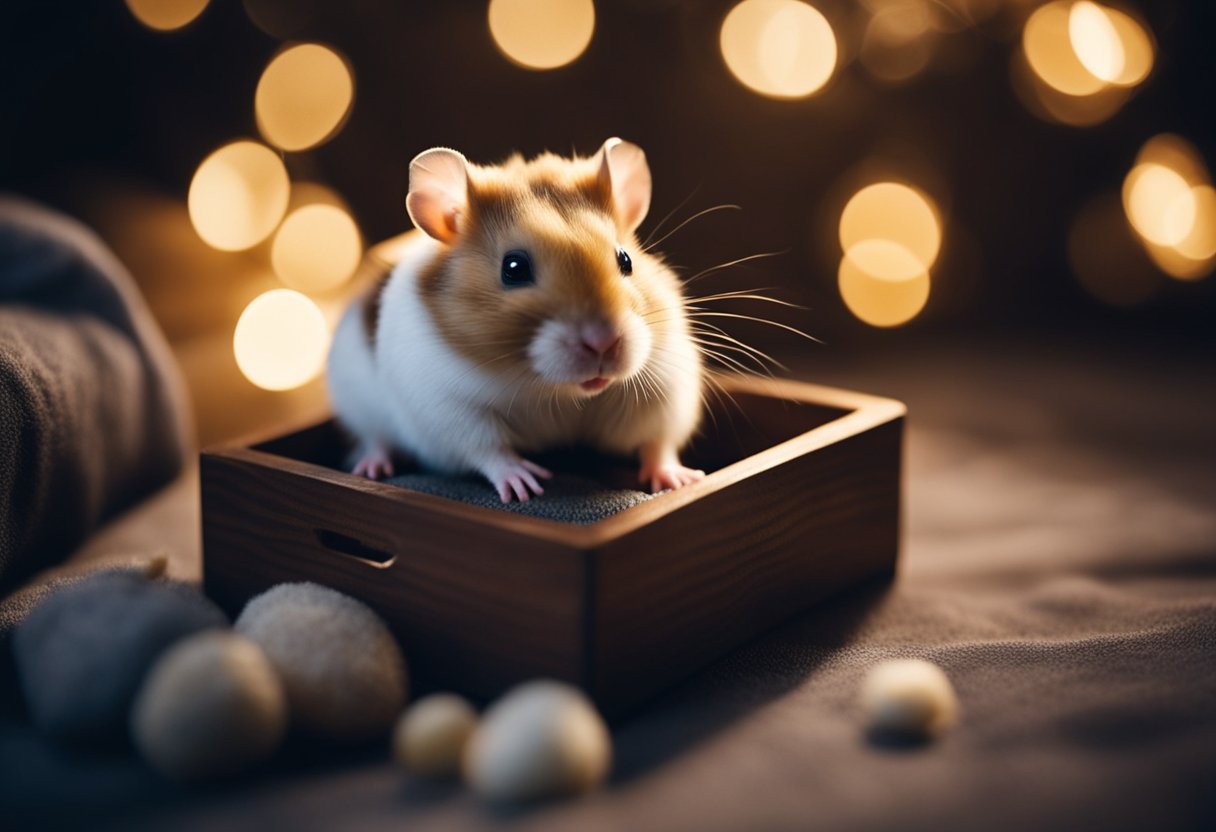
Losing a pet is never easy, and the death of a hamster can be particularly distressing. It’s important to take immediate action after your hamster passes away to ensure that you handle the situation appropriately and with respect. Here are the steps you should take immediately after your hamster’s death:
Confirming the Death
The first step is to confirm that your hamster has passed away. Check for signs of life by observing your hamster’s breathing and heart rate. If there are no signs of life, your hamster has likely passed away. You can also check for rigor mortis, a stiffening of the body that occurs after death. To check for rigor mortis, gently move your hamster’s limbs to see if they are stiff.
Handling the Body
Once you have confirmed that your hamster has passed away, it’s important to handle the body with care. Wear disposable gloves and a face mask to protect yourself from any potential diseases or bacteria. Place your hamster in a sealed plastic bag to prevent any odor or leakage, and store it in a cool place until you can decide on the next steps.
Communicating with Family
The death of a pet can be a difficult topic to discuss, but it’s important to communicate with your family about what has happened. Let them know that your hamster has passed away and discuss the next steps together. If you have children, it’s important to talk to them about death and help them understand what has happened. You may also want to consider holding a small memorial service for your hamster to help with the grieving process.
By following these immediate steps after your hamster’s death, you can handle the situation with care and respect. Remember to take your time and process your emotions, and seek support from friends and family if needed.
Long-Term Considerations
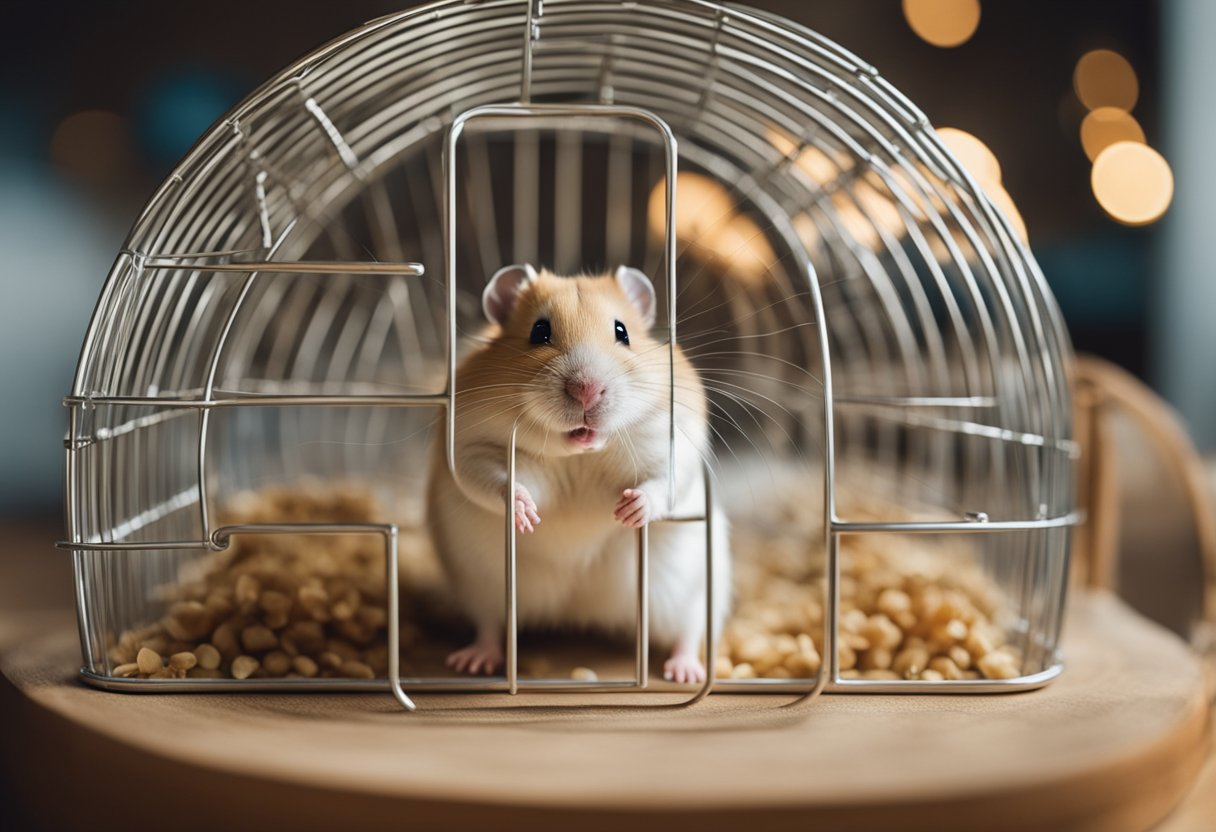
Losing a pet can be a difficult and emotional experience. It’s important to take the time to process your feelings and give yourself the space to grieve. Here are some long-term considerations to keep in mind after your hamster has passed away.
Grieving and Emotional Support
Everyone grieves differently, and it’s okay to take the time you need to process your emotions. You may feel sadness, guilt, anger, or a range of other emotions. It can be helpful to talk to someone about how you’re feeling, whether it’s a friend, family member, or therapist. Some people find comfort in joining a support group or online community for pet owners who have experienced loss.
Memorializing Your Pet
Creating a memorial for your hamster can be a way to honor their memory and keep them close to your heart. You could create a photo album, scrapbook, or shadow box with pictures and mementos. Planting a tree or flowers in your hamster’s memory can also be a meaningful way to remember them. Some people choose to have their pet cremated and keep their ashes in an urn or scatter them in a special location.
Considering a New Pet
While it’s important to take the time you need to grieve, you may eventually feel ready to bring a new pet into your home. Before getting a new hamster, make sure you’re emotionally ready and have the time, resources, and space to care for them properly. You may also want to consider adopting a pet from a shelter or rescue organization.
Remember that every pet is unique, and it’s okay to take the time you need to grieve and honor their memory in your own way.
Resources
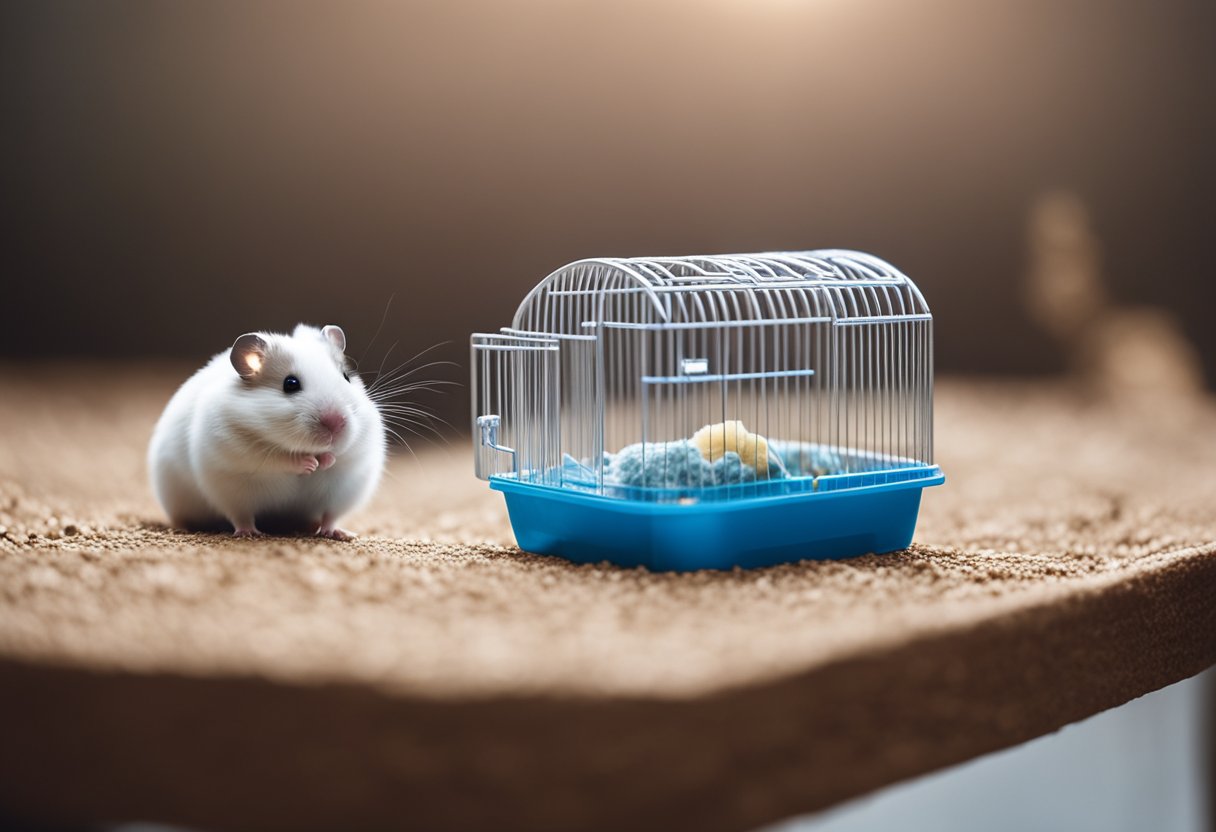
Losing a pet can be a difficult and emotional experience. If you need additional support during this time, there are resources available to help. Here are a few options:
Pet Loss Hotlines
Pet loss hotlines offer a listening ear and emotional support for those grieving the loss of a pet. The ASPCA Pet Loss Hotline (877-474-3310) and the Pet Loss Support Hotline (888-478-7574) are two options that you can call for free.
Pet Loss Support Groups
Pet loss support groups provide a space for individuals to connect with others who are also grieving the loss of a pet. You can search for local support groups through websites like Pet Loss or Grief Healing.
Online Communities
If you prefer to connect with others online, there are many forums and social media groups dedicated to pet loss and grief. Some popular options include Rainbows Bridge, Pet Loss Matters, and Pet Loss Support Group.
Professional Counseling
If you are struggling to cope with the loss of your pet, it may be helpful to seek professional counseling. You can ask your veterinarian for a referral or search for a licensed therapist through websites like Psychology Today or GoodTherapy.
Remember, it is important to take care of yourself during this difficult time. Reach out to others for support and take the time you need to grieve.
Conclusion

Losing a pet is always difficult and the death of a hamster is no exception. However, it’s important to know what to do when your hamster dies to ensure that they are given a proper send-off.
First, confirm that your hamster has passed away and is not in a state of hibernation or torpor. Then, you have a few options for what to do with your hamster’s body. You can bury them in a quiet and secluded spot, cremate them, or compost them.
If you choose to bury your hamster, make sure to wrap them in a clean cloth and place them in a small cardboard box. Choose a location that is safe from other animals and where you won’t accidentally dig them up. You can mark the spot with a small memorial or plant a flower or tree in their honor.
If you choose to cremate your hamster, you can contact a pet cremation service or your veterinarian for options. Some services even offer urns or other ways to memorialize your pet.
Finally, if you choose to compost your hamster, make sure to follow proper guidelines for composting. This can be a more eco-friendly option and can even be used to fertilize plants in your garden.
Whatever option you choose, it’s important to give your hamster a dignified send-off and to take the time to grieve their loss. Remember the happy times you shared with your pet and cherish the memories.
Frequently Asked Questions

How can I properly dispose of my deceased hamster if I live in an apartment?
If you live in an apartment, you may not have access to a garden or outdoor space to bury your hamster. In this case, you can consider cremation or burial in a pet cemetery. You can contact your local pet cremation or burial services to inquire about their options and prices.
What are the options for handling my hamster’s remains if I don’t have a garden?
If you don’t have a garden, you can consider burial in a pet cemetery or cremation. You can also contact your local veterinary clinic to inquire about their options for handling your hamster’s remains.
How should I manage my child’s emotions after their hamster has passed away?
Losing a pet can be a difficult experience for children. It’s important to be honest and open with them about what has happened and to provide emotional support. You can encourage them to express their feelings and offer them comfort. You can also consider creating a memorial for their hamster, such as planting a tree or creating a photo album.
What steps should I take to clean the area where my hamster died?
If your hamster has passed away, it’s important to clean the area where they were living to prevent the spread of disease and odors. You can use a disinfectant cleaner to clean the cage and surrounding area. You should also dispose of any bedding or toys that were in contact with your hamster.
Is it legal to throw away my dead hamster in the trash?
It is generally not recommended to throw away your dead hamster in the trash. Some cities have specific regulations regarding the disposal of animal remains. You can contact your local waste management service to inquire about their regulations and options for disposing of your hamster’s remains.
How can I prevent health hazards after my hamster has died?
After your hamster has passed away, it’s important to take precautions to prevent the spread of disease and odors. You should wear gloves when handling your hamster’s remains and dispose of any bedding or toys that were in contact with them. You can also use a disinfectant cleaner to clean the cage and surrounding area.
